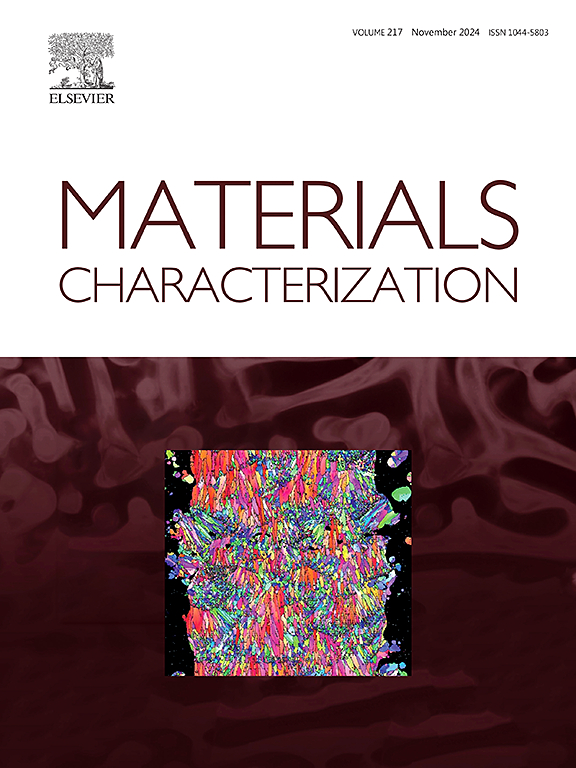Effect of TiB2 particles on the microstructure and mechanical properties of Al-Si-Cu-Mg-Ni alloy fabricated by powder metallurgy
IF 4.8
2区 材料科学
Q1 MATERIALS SCIENCE, CHARACTERIZATION & TESTING
引用次数: 0
Abstract
The mechanical properties of Al-11Si-3Cu-2Ni-1 Mg alloy (M142 alloy) are significantly affected by grain size, Si phase and intermetallic phase size and distribution. Therefore, the regulation of microstructure is very important to improve the mechanical properties of the alloy. In this work, high performance TiB2/M142 composites were prepared by powder metallurgy and hot extrusion. The results show that TiB2 particles can effectively refine the grain and the second phase, and induce more intragranular intermetallic phases. With the increase of TiB2 content, the strength increased continuously, but the ductility increased first and then decreased. The improvement of the strength of the composites are mainly attributed to thermal mismatch strengthening. The first increase in ductility is mainly due to the capture and pin of the dislocation by intragranular intermetallic phases, which makes the grains have stronger dislocation accumulation and storage capacity. The subsequent reduction in ductility is mainly attributed to the local stress concentration in the TiB2 agglomeration region, which eventually leads to the rapid failure of the composites.
求助全文
约1分钟内获得全文
求助全文
来源期刊

Materials Characterization
工程技术-材料科学:表征与测试
CiteScore
7.60
自引率
8.50%
发文量
746
审稿时长
36 days
期刊介绍:
Materials Characterization features original articles and state-of-the-art reviews on theoretical and practical aspects of the structure and behaviour of materials.
The Journal focuses on all characterization techniques, including all forms of microscopy (light, electron, acoustic, etc.,) and analysis (especially microanalysis and surface analytical techniques). Developments in both this wide range of techniques and their application to the quantification of the microstructure of materials are essential facets of the Journal.
The Journal provides the Materials Scientist/Engineer with up-to-date information on many types of materials with an underlying theme of explaining the behavior of materials using novel approaches. Materials covered by the journal include:
Metals & Alloys
Ceramics
Nanomaterials
Biomedical materials
Optical materials
Composites
Natural Materials.
 求助内容:
求助内容: 应助结果提醒方式:
应助结果提醒方式:


